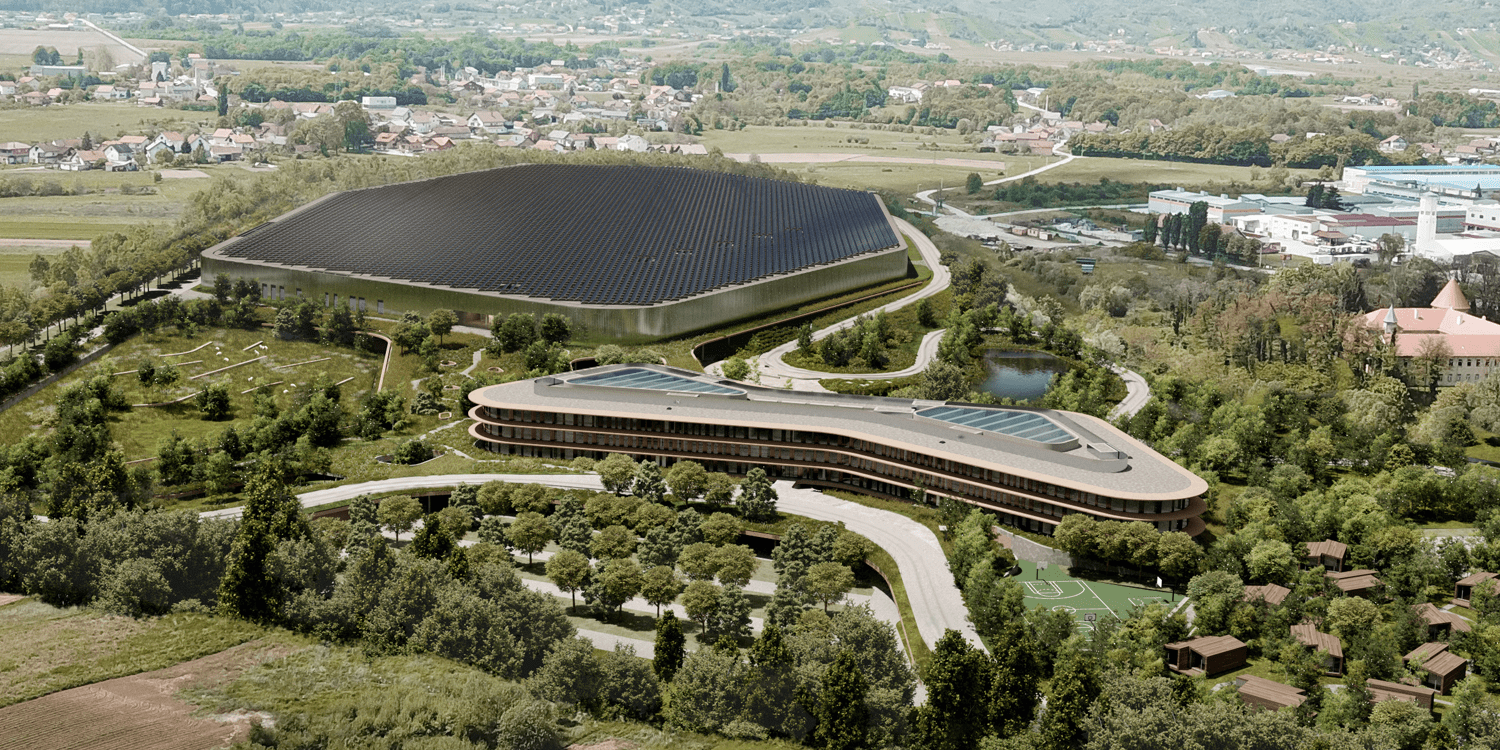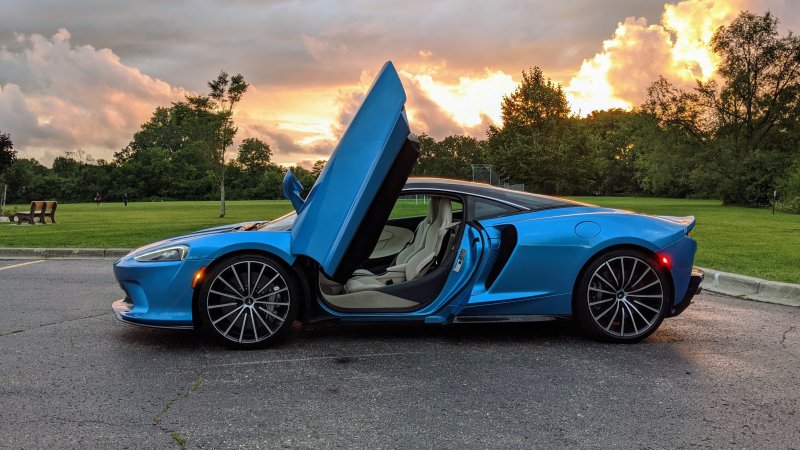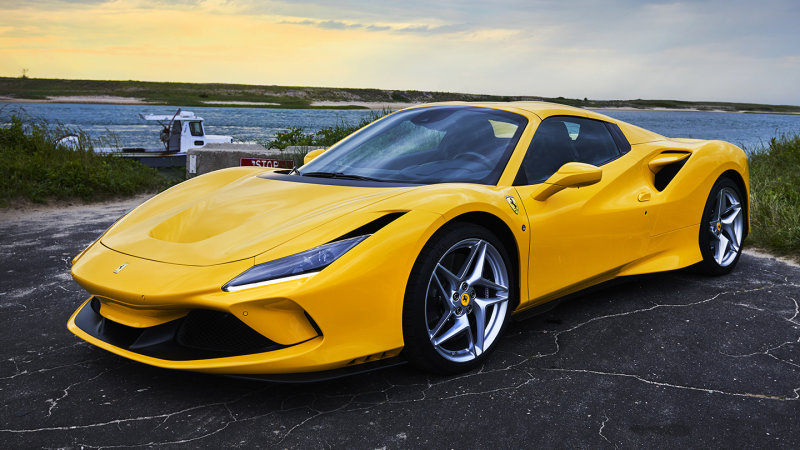The Range Rover Sport SVR is the most powerful and agile vehicle produced by the historic luxury SUV manufacturer. It is a Range Rover at its most extreme in terms of speed, handling, presence and premium interior appointments.
The Good: Fantastic performance, in spite of its size. Visibility is excellent and the panoramic sunroof enhances the experience. Great acceleration matched by a sweet exhaust note, backed up by quality handling. When not pushed to the edge, the Range Rover Sport SVR reverts to a comfortable lounge on wheels.
Who It’s For: Anyone looking to make a splash. There’s a surprising amount of competition in this luxury sport SUV segment, and this one certainly leans towards the more outgoing shopper.
Watch Out For: The infotainment system is woefully laggy – most steering wheel inputs change contextually depending on what system you’re using, but even those have odd, slow-to-muddled responses. Though loaded with cameras for parking scenarios, which you’ll very much need, they’re hard to use on the fly. The Bentley Bentayga might up the Range Rover in sophistication, and the Porsche Cayenne has possibly the most refined sportiness of all these, but the Range Rover doesn’t seem to take itself as serious, thus coming across as more fun.
Alternatives: This particular segment caters to an uncompromising crowd, one that wants utility, sportiness, and luxury in one package, and they’re willing to pay for it. As such, there’s more than a few vehicles that can challenge the Range Rover Sport SVR. These include:
BMW X5 M ($101,700, base)
Bentley Bentayga V8 (approx. $168,000, base)
Porsche Cayenne Turbo ($124,600, base)
Review: I keep coming back to the word “decadent” each time I look at the Range Rover Sport SVR. Even in a traditionally subtle grey, the whole thing oozes flash, thanks to its carbon fiber accents and generally massive presence. This is only amplified when I think about the 575-horsepower supercharged V8 under the giant ventilated hood. Like a thick, quadruple-chocolate dessert, it’s layers of unnecessary indulgence, and I absolutely loved it.
This is hardly the first SUV to cater to the uncompromising demand for utility vehicles that also perform like sports sedans, can handle a modicum of rough terrain and are luxurious enough to arrive at a film premiere. It keeps in good company with cars like the Bentley Bentayga, BMW X5 M and the wildly successful Porsche Cayenne Turbo. But those vehicles seem to have a level of seriousness about them that the SVR lacks. It feels unapologetically ridiculous and is all the better for it.
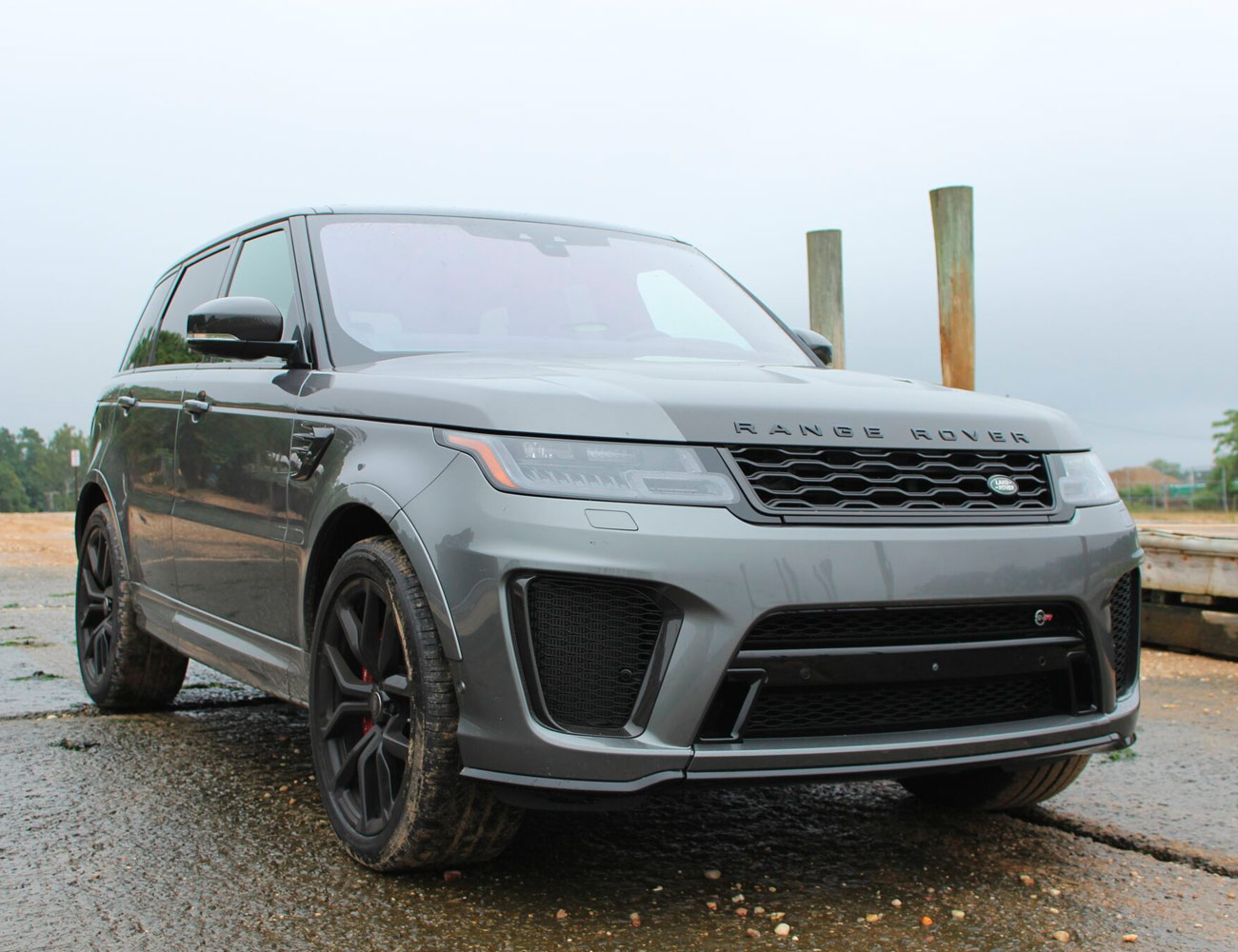
Attuned to more road-going activities than off-road wandering, the Range Rover Sport rocks a modern, sleek exterior made all the more aggressive with the SVR’s ventilated carbon fiber composite hood. Additional carbon fiber touches round out the look, adding the sporty-looking material to the grille, side vents and door mirrors. Further accents will be found throughout, as well as SVR badging and red brake calipers to complete the look. Even in one of the subtler grey paint jobs, the SVR managed to turn a few heads during my time with it, even in during the few instances where I didn’t have the active exhaust dialed up to its loudest setting.
The SVR doesn’t look dressed for a safari like the Range Rovers of old. It’s not even that suited for formal occasions. Instead, the Range Rover Sport SVR is dressed for a night out of dinner, club-hopping and lounge… lounging.
As such, like anyone still in their evening party attire the next day, the SVR is awfully conspicuous during daily errands, though it doesn’t make it any less fun or capable. With seats for five, even a fully-laden SVR has about 25 cubic feet of cargo space. There’s ample headroom and legroom for all, and befitting a car descended from exploratory vehicles, the visibility from all angles is stellar.
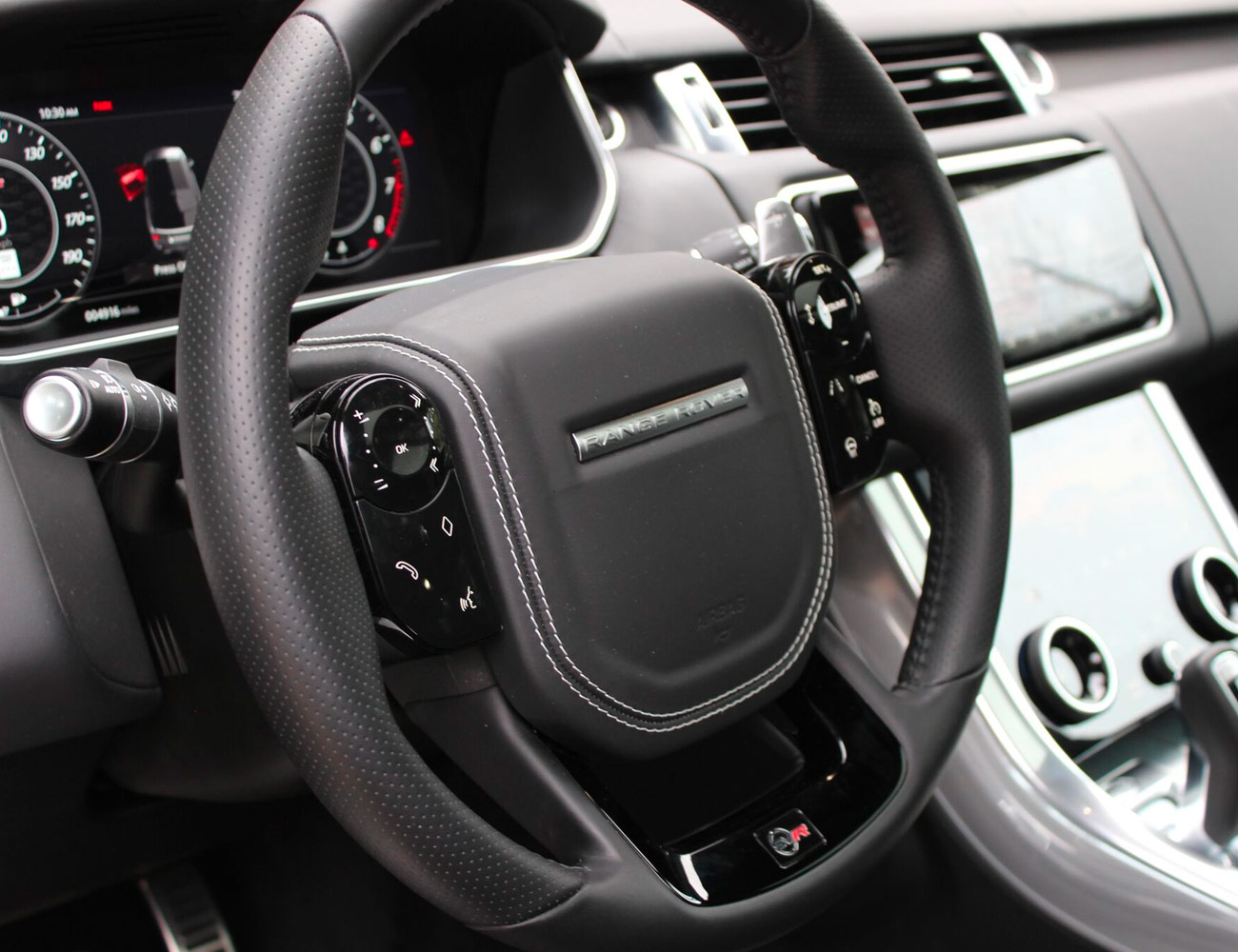
It’s the interior where the Range Rover begins to falter. This isn’t due to lack of comfort or really any design choices. The interior is quite sleek, but a byproduct of this streamlining is an infotainment system that puts a run in the SVR’s stockings.
The Touch Pro Duo is the two-screen touch interface in which Land Rover packs all the car’s features. You get the usual media, navigation and car settings on the 10-inch main screen, but it’s supplemented by a smaller screen directly beneath it. This shares some of the burden by accommodating some phone and music options, but its also tied into the climate control and drive select settings.
Relegating a majority of commands to a touchscreen looks great on paper and, for sure, there are tons of features that don’t need their own physical button, but the execution ends up being far trickier than anticipated. To be fair, there are physical knobs for temperature controls and radio volume, as well as buttons for the Range Rover’s different terrain-traversing settings, but both screens end up demanding far more driver attention than they should be, and that’s when it works right.
Putting aside the other quirks of this system for a moment, the ultimate issue of the interface is that there’s significant input lag on just about everything. Tapping or swiping has that half second of delay or slow transition to the menu you wanted to activate. It doesn’t seem like a lot but this lag would be annoying even on a handheld tablet, let alone in a car. Furthermore, fractions of a driver’s attention are precious and are already stretched thin when an all-touch-everything interface holds all the systems you need. It doesn’t let up on the steering-wheel-mounted buttons either, which inexplicably suffer from the same issue. Doing things on the fly is very much a chore, and the car needs a good solid static setup session before rolling out. Having a co-pilot doesn’t hurt, either.
To lend a hand or not, it won’t be difficult to lure additional occupants to join you in the SVR. In its most docile stance, the car still makes itself known, both visibly and audibly, but it’s well-behaved, particularly for passengers. Comfort mode provides a smooth, luxury experience with a soft ride and gentle acceleration. For the driver, the steering softens up, and the whole experience notably contrasts its performance settings.
Though street-capable, the SVR is still a Range Rover, providing preset modes ready for snow, mud, sand or rock-crawling. Hill descent is standard, as is all-wheel drive, and the SUV can wade through 33.5 inches of water, though, that’s akin to taking your dressiest boots through a hike in the woods.
Supposing you heard of a secret race track only accessible in the woods and you used the Range Rover’s all-terrain tackling tricks to get there, the SVR is pretty much ready to traverse that, too. First off, the supercharged 5.0-liter V8 has an impressive 575 horsepower and 526 pound-feet of torque to offer up, launching the car from 0 to 60 in 4.3 seconds, according to Land Rover. This routes through an eight-speed automatic with paddle shifters, and rides on a chassis enhanced over other Sport iterations. Dialed up to Track, the car’s eager to launch up to its 176 mph top speed.
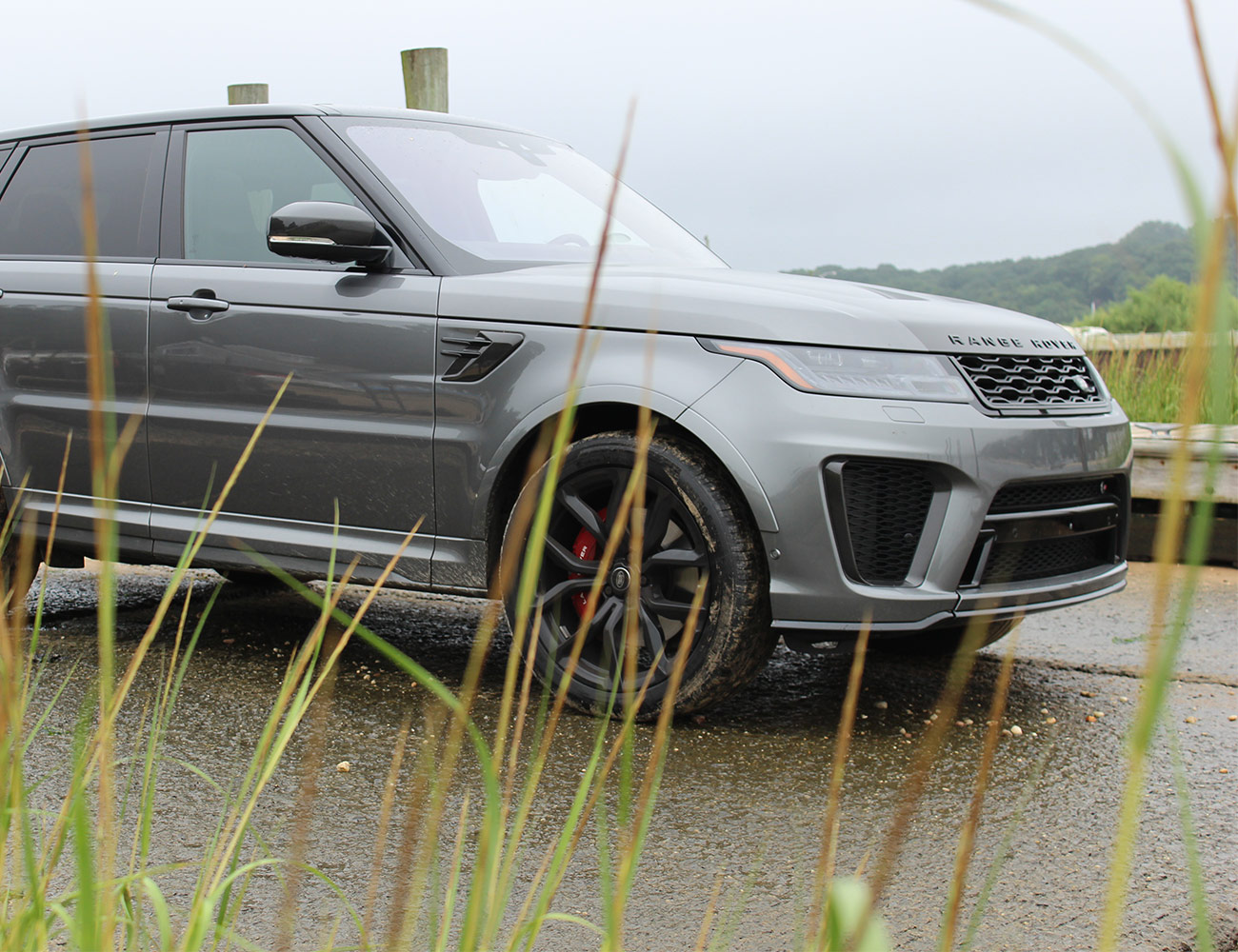
In its most aggressive setting, the V8 is unchained and throttle response is snappy. The surge forward is enhanced by the unadulterated roar of the wide-open active exhaust, and – to my great surprise – the handling was there to put it all to use. Thanks to Land Rover’s Special Vehicle Operations, the SVR has improved damping hardware to better control the body in instances of heavy braking or sharp turns. This translates into an SUV that suddenly feels lighter and smaller than it actually is. On drives through back roads, I kept finding instances to test the SVR through corners I didn’t think it’d be able to take without great effort, only to be delighted that the car managed them just fine. And forget the highway, putting your foot down transforms the SVR into a tidal wave of furious metal.
“It doesn’t have to do any of this,” I kept saying to myself. As if the standard Range Rover or Sport needed to have supercar power and track-ready handling. But I was glad that it did. In essence, it became an impenetrable luxury terrarium that provided the most serene capsule for me and my guests, all while traversing through all sorts of the different environments we came across, urban, rural and everything in-between. All that extra enhances even the most mundane duties an SUV can be tasked with. It’s unbelievably extra in every way (including price), and it’s equally as satisfying.
Verdict: The Range Rover Sport SVR is an exercise in pure indulgence. All the extra horsepower and handling capabilities are far beyond what’s expected or required, which makes it an unapologetic delight. Throw in its built-in off-road capabilities and it’s a luxury cocoon ready to carry you through any situation.
What Others Are Saying:
• “Although it is far from what we would regard as a genuine performance car in anything other than its astonishing acceleration, it is still remarkably well rounded.” – Mike Duff, Car and Driver
• “The Touch Pro Duo interface… [is] frustratingly slow to respond, as were the gauge cluster menus when using the steering wheel controls.” – Kyle Cheromcha, The Drive
• “It sounds quick, it feels quick, it is quick, equally at home running hard in the left lane on the freeway as it is storming an open, sweeping two-lane back road. This is a Range Rover with the grunt, the grip, and the brakes of a genuine performance car.” – Angus MacKenzie, Motor Trend
2018 Range Rover Sport SVR Key Specs
Engine: 5.0-liter supercharged V8
Transmission: eight-Speed Automatic
Horsepower: 575
Torque: 516 lb-ft
Weight: 5,093 lbs
0-60: 4.3 seconds
Top Speed: 176 mph
Hot takes and in-depth reviews on noteworthy, relevant and interesting products. Read the Story



